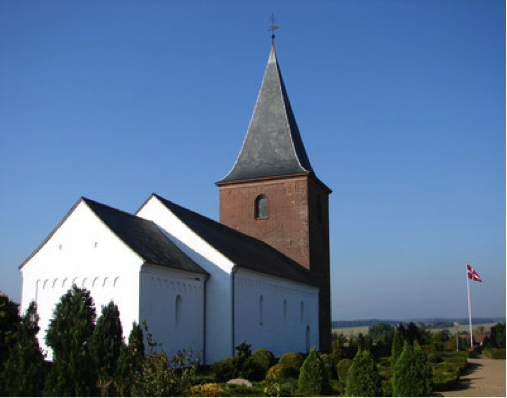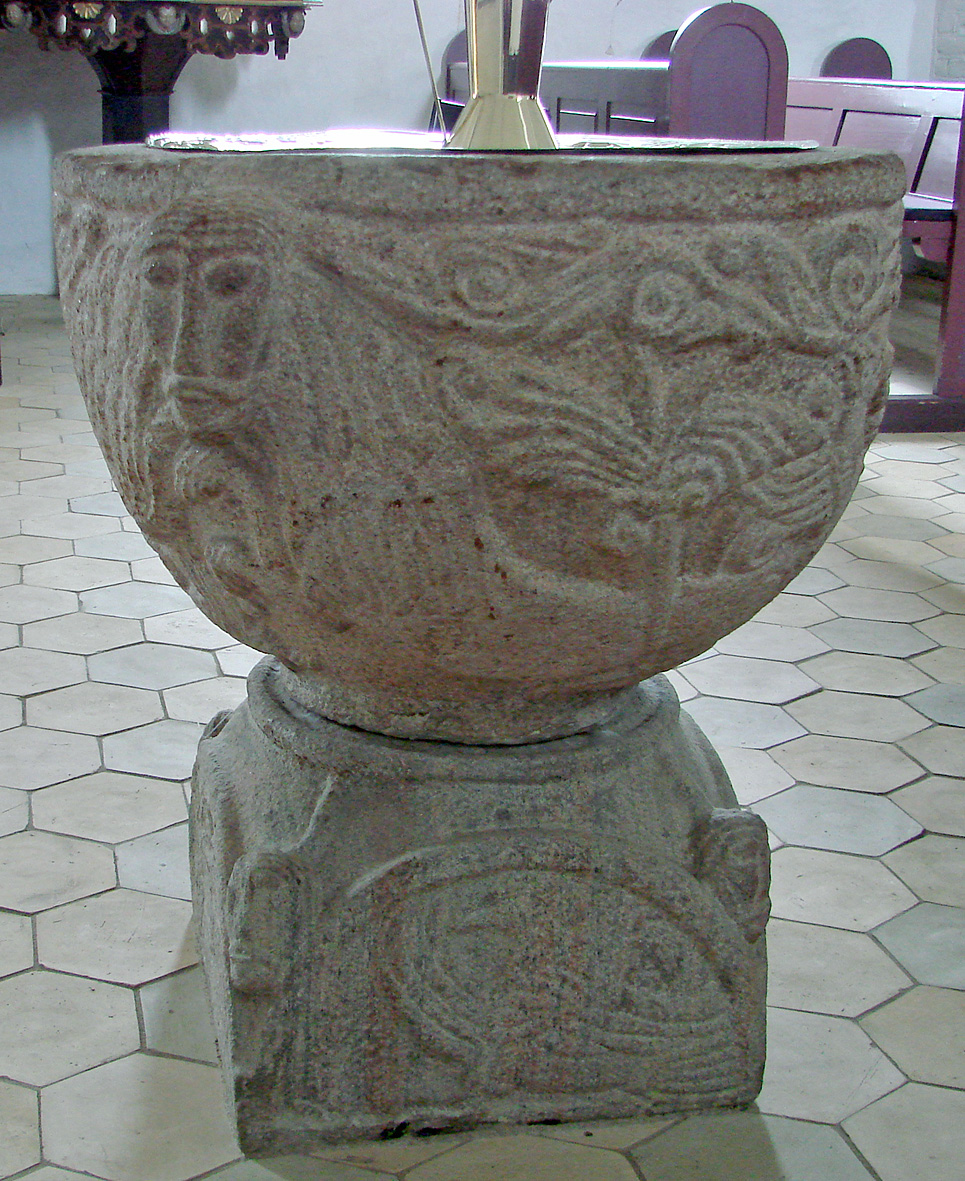Haldum on:
[Wikipedia]
[Google]
[Amazon]
 Haldum is a village within the Haldum parish of the Favrskov municipality of mid- Jutland, Denmark, 20 km northwest of
Haldum is a village within the Haldum parish of the Favrskov municipality of mid- Jutland, Denmark, 20 km northwest of
 Haldum Church is a Romanesque style building constructed during the first half of the 12th century out of travertine limestone. The 1203 will of Bishop
Haldum Church is a Romanesque style building constructed during the first half of the 12th century out of travertine limestone. The 1203 will of Bishop
 Haldum is a village within the Haldum parish of the Favrskov municipality of mid- Jutland, Denmark, 20 km northwest of
Haldum is a village within the Haldum parish of the Favrskov municipality of mid- Jutland, Denmark, 20 km northwest of Aarhus
Aarhus (, , ; officially spelled Århus from 1948 until 1 January 2011) is the second-largest city in Denmark and the seat of Aarhus Municipality. It is located on the eastern shore of Jutland in the Kattegat sea and approximately northwest ...
. The town is home to the medieval-era Haldum Church. In 2004, Haldum Church became known as an archaeological site when the Moesgård Museum conducted excavations in the area surrounding the churchyard, which yielded notable Viking Age and Early Medieval period findings.
Haldum Church
 Haldum Church is a Romanesque style building constructed during the first half of the 12th century out of travertine limestone. The 1203 will of Bishop
Haldum Church is a Romanesque style building constructed during the first half of the 12th century out of travertine limestone. The 1203 will of Bishop Peter Vognsen
Peter may refer to:
People
* List of people named Peter, a list of people and fictional characters with the given name
* Peter (given name)
** Saint Peter (died 60s), apostle of Jesus, leader of the early Christian Church
* Peter (surname), a ...
of Aarhus bequeathed the “church and manor” to the canons of the Aarhus cathedral. Since then, the church has been modified multiple times. Vaults over the chancel and naves were constructed in the late Middle Ages, and a tower was added. In 1865 Christen Kiilsgaard
To christen is to perform the religious act of baptism.
Christen may also refer to:
People Surname
* Adolf Christen (1811–1883), court actor, theater director and theater manager
* Andreas Christen (born 1989), footballer from Liechtenstein
...
oversaw a complete renovation, and added the current spire.
The church bell is from the 14th century. The altarpiece in the church dates from 1599. The carved wooden pulpit
A pulpit is a raised stand for preachers in a Christian church. The origin of the word is the Latin ''pulpitum'' (platform or staging). The traditional pulpit is raised well above the surrounding floor for audibility and visibility, access ...
was constructed in 1615. The church houses a baptismal font from the mid-16th century and is made of granite. The fonts brass basin was made in southern Germany around the same time.
Moesgård Excavations
The Moesgård Museum, based near Aarhus, was given permission to excavate the site due to a road construction plan in 2004 and it was able to excavate the area near the churchyard of Haldum Church. During this excavation, archaeologists found 16 inhumation graves and five cremation graves from the late 10th century. Because no visible traces of Christian worship were found, the graves are assumed to be pagan. The excavators from the Moesgård Museum unearthed a series of typical Viking Age grave goods, such as pottery and knives. They also found evidence suggesting that at least some of the graves belonged to members of the social elite. Two graves were chamber burials. In one of the chamber graves, excavators found aJelling style
Viking art, also known commonly as Norse art, is a term widely accepted for the art of Scandinavian Norsemen and Viking settlements further afield—particularly in the British Isles and Iceland—during the Viking Age of the 8th-11th ce ...
bronze ornament. In addition to this finding, the archaeologists also discovered two caskets which had once been brilliantly ornamented.
On the southern end of the churchyard, a series of postholes indicates a 130-meter horizontal fence that predates the church. Although no further buildings have been found to have existed within the fence, its construction is speculated to have complemented the “church and manor” complex referred to by Vognesen in his will.
Haldum Church was constructed less than 200 years later on the same site as the Viking-age graves. Because churches were often built upon existing pagan sites where chieftains served religious functions, it is highly probable that Haldum had once been home to an aristocracy. It is more difficult, however, to determine whether the fence mentioned above reflects a link between a possible Viking aristocracy in the late 10th century and the builders of the church. Because one of the fence’s postholes had been placed inside a grave - a sign of disrespect in a family-oriented Viking Age culture - the church builders would probably have been strangers to the area.
References
{{Coord, 56, 13, N, 10, 10, E, display=title, region:DK_type:city_source:GNS-enwiki Towns and settlements in Favrskov Municipality